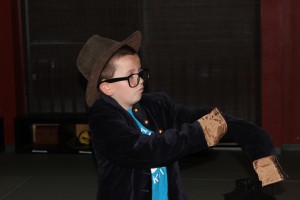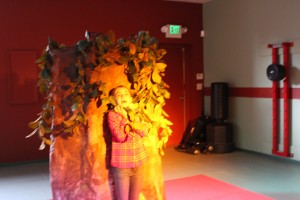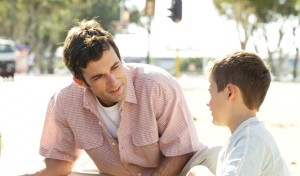Reducing stress the Balanced Life Skills Way
 Both adults and children feel overwhelmed and stressed. From an adult point of view, we must remember that the feelings of stress are relative to the person feeling them. A child may be stressed over an event that an adult sees as nothing, but to the child it may feel like the whole world.
Both adults and children feel overwhelmed and stressed. From an adult point of view, we must remember that the feelings of stress are relative to the person feeling them. A child may be stressed over an event that an adult sees as nothing, but to the child it may feel like the whole world.
Stress is the direct result of feeling; there is too much to do, relationship issues, deadlines to meet and feeling like we have lost control of ourselves, our lives and sometimes even our feelings. The Balanced Life Skills way of teaching students is also the way a student learns to reach Black Belt Success.
The Balanced Life Skills Way goes like this:
Here is how this relates to reducing stress.
First you must know what you want / or what the problem is. Can you identify what you feel is wrong. When, Why and Where is it happening? What would you like to see happen that would make your life better? What is your goal?
Brainstorm some ideas of how to reach your goal. Your answers do not have to make sense to you right now and you do not have to think of the perfect plan now. Come up with many different ways that you believe you could solve the problem. If you cannot think of any, talk to your supporters (parents, teachers, friend, sibling) for their ideas and then get them written down. Now it is time to select a solution. You may want to have a ‘success coach’ as you weigh your different options, to help you stay on track. Pick one that you believe will help you reach your goal and that you are comfortable with.
Commit to working your plan and take consistent action. Persevere and do not give up. If you have a ‘success coach’ they can help guide you and keep you on the path you have chosen.
Review your progress. Is what you are trying working or not working? Do you need to tweak a part of it or try something new altogether? Has something changed for you, are the circumstances or end results the same as when you started on this path? Regularly checking in and then renewing and sometimes revising your goals will keep you feeling like you are in control of your life and the decisions being made that effect you.
Making decisions and choices about your life is a key part of reducing stress. Make the best decisions possible so that you stay on the path that will make you feel the best and result in the success you want out of your life.
Core Arts Standards and Life Skills


|
|
|
|
|
|
|
|
Self Defense: What would you do….
What would you do if:
Teaching children self defense
This can be a difficult subject to talk to your kids about without scaring them into thinking that every stranger is out to get them. On the other side, studies have shown that many, in fact the majority of children, even though their parents have talked about this will put themselves into a dangerous situation when faced with this situation.
Here is what you want your children to know:
- It is OK to say NO to an adult
- Adults should go to other adults for help, not children.
- Never go towards or near a car when it is someone you do not know
- Always turn and run back into your house and tell an adult right away
The child may fear that they have done something wrong. They may have been further out in the yard than you generally allow them to be. Reassure them during their training that they are not in trouble if they tell you their story.
To give your children the best chance to know what to do and the courage to do it remember this quote:
“Tell me and I forget, Teach me and I may remember, Involve me and I learn.”
The most important part of this kind of training is role playing it is involving them in the training. Have the child pretend with you different scenarios, role play different questions with them.
“would you like to see my puppy?”
“can you help me find my puppy?”
“do you want a piece of candy?”
“can you help me carry these packages to the door?”
Depending on the age, limit the amount of time on each session you are teaching your children. It is better to schedule a self defense day with the family on a regular basis. Some days it may cover this subject or many others like the ones we talk about at Balanced Life Skills. Consistent short trainings are far more effective than a one hour class that you take one time.
We are here to help you keep your family safe.
Building Confidence in Children in 5 Easy Steps
 There are so many negative messages around and directed at young people, especially from those surrounding them, like the media they see and read, and the messages they hear from adults and friends. How can we as the adults in their life help them develop a positive, confident attitude while teaching them how to do the same for themselves?
There are so many negative messages around and directed at young people, especially from those surrounding them, like the media they see and read, and the messages they hear from adults and friends. How can we as the adults in their life help them develop a positive, confident attitude while teaching them how to do the same for themselves?
Focus on the good things that they are doing, identifying their unique strengths and expressing your appreciation for those strengths. It is easier for both us as adults and them as students to quickly see the faults or the things we would do differently. Seeing the good will help our children to do the same with themselves and others. This is not about over praising them, rather an acknowledgment of their unique qualities.
Focus on learning and thinking critically as well as creatively. Encouraging our children to learn to think and learn with open minds makes a powerful difference in their life and how they feel about school and learning, building their confidence in themselves.
Take care of the physical health. Encouraging our children to be active, by being active ourselves, eating in a healthy manner, all lends itself to feeling positive and confident.
Having a mission and setting goals, both as a family and as an individual gives us something to look forward to and work towards. As you meet your challenges and work through them your confidence increases. Working this together as a family helps our children to feel good about themselves.
Give back to others. Helping others not only helps us have gratitude for what we have, but it also gives us a great feeling, knowing that we were able to assist someone else. Confidence comes from seeing the accomplishments of our services to others.
The messages we send our children every day has an effect on the feelings they have for themselves. Are they proud of who they are, the way they learn, their physical health and what they are doing to maintain it, do they know where they are going and why, and are they showing gratitude for all they have and give to others? Doing these things makes every child and adult feel positive about themselves.
Building kids confidence to think on their own
 When our children are young, we as parents are making all of the decisions for them. What they eat, wear, what they do, where they go and who they are playing with. As they get older they need to start thinking and making more decisions on their own. Having the confidence to think on their own, make choices and use their verbal skills to express themselves tells us that they are growing up. Unfortunately, much of the way classrooms are taught is not encouraging critical or creative thinking and the same may be true in the home.
When our children are young, we as parents are making all of the decisions for them. What they eat, wear, what they do, where they go and who they are playing with. As they get older they need to start thinking and making more decisions on their own. Having the confidence to think on their own, make choices and use their verbal skills to express themselves tells us that they are growing up. Unfortunately, much of the way classrooms are taught is not encouraging critical or creative thinking and the same may be true in the home.
There are some experts that put the blame on a change in culture – with all of the attention on the amount of media and the internet that young people are exposed to and seem to be addicted to. However if we as parents and teachers are inclined to tell youngsters what to do and what to think and not teach them how to think about what they are doing – we end up with students who are not creative or able to think through why certain behaviors are better for them than others. They expect for others to tell them what to do – and they expect that if it doesn’t fit their model they will fight about it. Here are two suggestions to get that critical and creative thinking going.
1. Expect students to explain their opinions – Everyone of us has the need to be heard and we want others to know what we think and feel, including children. As parents it is important to hear our children, but we should also expect that they explain to us how they came to these opinions. Having them explain – we will hear some very interesting thought processes – but that is important, so we can demonstrate other points of view. Working the conversations in this manner will help them use their brain to think of other options.
2. Demonstrate for them how to think and to be creative – Not all answers that we come up with are going to be the best answers, they may not be what is best for us or others, they may not be safe or fair. This does not mean that they are not answers, this is about being creative. When a difficult decision needs to be made, allow all of the answers to be heard – no matter how far-fetched and then think and talk through the positive and negative aspects of each one.
What does this have to do with confidence? Confidence comes from our ability to think, to see things as they are – not more or less difficult than they really are. Confidence comes from being able to be creative and come up with solutions that may not be expected. Teaching our children to think – critically and creatively will go a long way to building their confidence.


